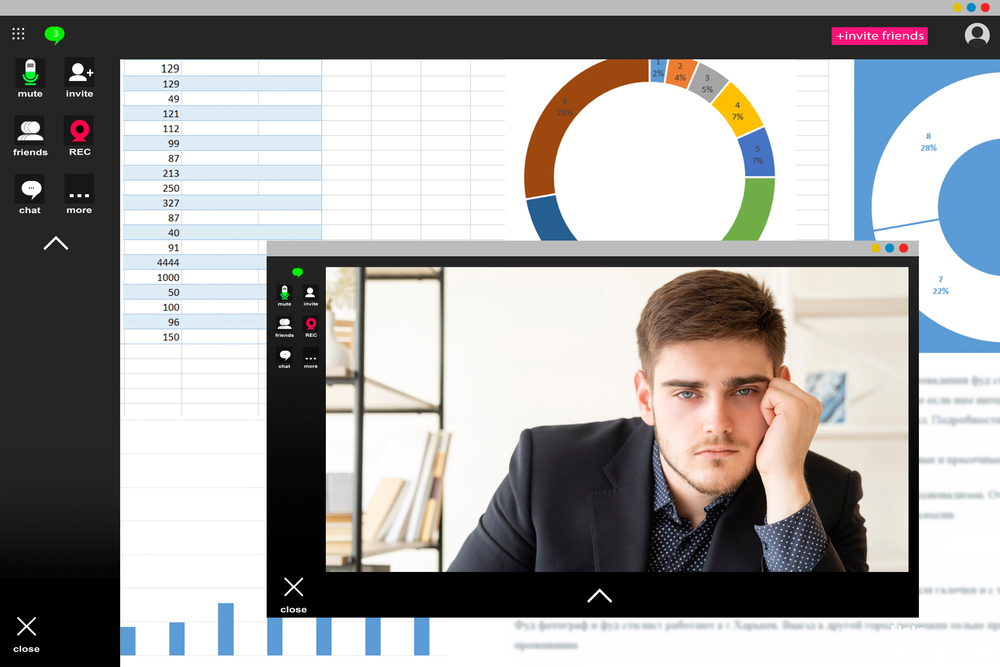Whether you love it, hate it, or just deal with it, remote work is here to stay. At Ladders, a career advice and job search service focused on positions that pay over $100,000, data researchers see an ongoing trend toward hybrid workplaces. According to their data, 25 percent of work was remote in 2022 and that share will continue to increase in 2023. Remote opportunities for high-paying jobs went from 4 percent pre-pandemic to over 9 percent today.
It has been three years since we moved to hybrid workplaces and the novelty seems to have worn off and a lack of professionalism has crept in. In video meetings, some people don’t turn their cameras on or go on mute, and often multiple conversations are needed on the same topic because people aren’t fully present. To improve engagement, more companies are requiring employees to come back to the office.
There are lots of reasons that engagement and professionalism falter in remote workplaces, but the solutions are well known. They have been part of the pre-pandemic office environment for decades, but in a virtual environment, they are often overlooked. Some of these solutions may need to be tweaked for remote work, but the fundamentals remain the same.
Set Norms and Clear Expectations
Working from home does not mean anything goes and people are free to decide their own work hours. More attention needs to be paid to the best practices for managing staff working remotely. For example, managers should establish and communicate policies such as:
- Core hours when people are expected to be available.
- Procedures for informing managers and team members when a staff member won’t be available during core hours.
- Schedules for individuals who prefer to work outside typical hours.
Team members should also be informed of expectations for virtual meetings, including:
- Participants’ cameras must be on.
- Home offices should feature adequate lighting so participants can see each other.
- Multi-tasking is not allowed.
- Participants are expected to wear work-appropriate clothing.
Create and Circulate Agendas
Agendas are necessary whether a meeting is in-person or virtual. When sent out in advance, an agenda allows people to prepare their thoughts and ideas, leading to more productive conversations. At a minimum, the agenda should include goals for the meeting, a breakdown of topics with timeframes, and results expected from the meeting.
Ensure Participant Engagement
In hybrid meeting situations, where some participants are physically in a room while others are on screen, meeting leaders should be careful not to neglect remote participants. It may be harder for remote attendees to get the attention of speakers or the meeting leader; actively asking them for ideas and feedback will ensure they can contribute. When everyone is virtual, using breakout rooms can increase engagement and give quieter people more room to talk. Seeking to create a level playing field for all participants, some managers insist that everyone join the meeting online even if some are in the office.
Just as with face-to-face meetings, allow remote and in-office participants time to connect personally before getting underway. Icebreakers can be as simple as choosing a warm-up question like what’s working out well with working from home, what vacations do you have planned, and what has changed since we were last together?
Just as in the pre-pandemic time, meetings are more productive and reinforce teamwork when they incorporate elements that allow people to engage on topics. Dry report-outs were tedious when everyone was in one room; in hybrid and remote situations they’re virtually deadly.
Document Decisions and Action Items
It is easy in any meeting to lose track of decisions and actions. Build in time to review what has been decided and what actions people are responsible for and due dates. Capturing decisions and actions on the video conference electronic whiteboard or in the chat function will ensure all participants get the important information.
Build Relationships
Whether you are a manager or a peer, building strong relationships with other team members remains important though it can be more challenging in today’s workplace. For remote workers, the easy conversations that once occurred in the breakroom are no longer possible; connecting with colleagues requires more intentionality. Make a list of key people you need to stay in touch with and note how often you want to connect. Schedule those check-ins regularly to make sure you don’t lose touch.
 Keep notes about coworkers — their family, pets, hobbies, and important milestones like a graduation or wedding. This information provides background for virtual water cooler chats and conveys interest in connecting with colleagues personally as well as professionally.
Keep notes about coworkers — their family, pets, hobbies, and important milestones like a graduation or wedding. This information provides background for virtual water cooler chats and conveys interest in connecting with colleagues personally as well as professionally.
Ensure Ongoing Development
Remote workers often worry that their career development may take a backseat to other challenges in the new environment, and they may be missing out on impromptu training opportunities. Consider recording these sessions for remote employees to watch later. As with any development conversation, ask remote workers what new skills they want to develop, but also brainstorm ways to gain those skills in the remote environment.
Continue Teambuilding Activities
Creating cohesive teams in a hybrid environment is challenging, but it’s arguably more important compared to the traditional environment. Many teambuilding exercises can be adapted to work well virtually. Be conscious about what you are doing to keep the team involved and engaged. If possible, occasionally bring everyone together in person to make sure relationships stay strong. Celebrate successes and take time to review when things don’t go well to learn from them.
The pandemic caused significant workplace disruption, but that’s no reason to throw best practices out the office window. Instead of starting from scratch, get creative in ways to adapt tried and true practices to the new reality of hybrid and remote work.


